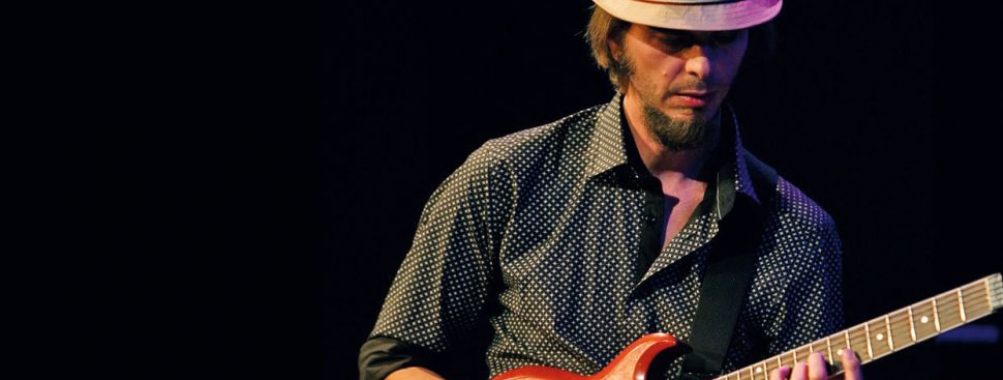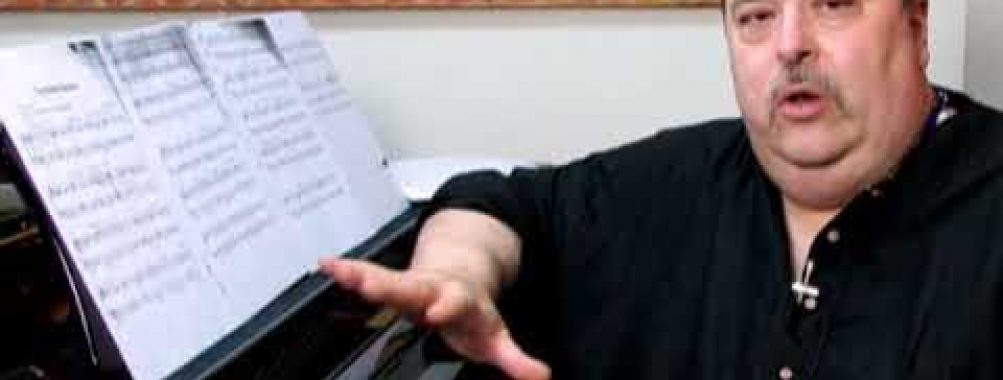
Alex Machacek Conversations
Buy
Itunes-note
Amazon
Bandcamp
It has been about five years that I have been listening to Alex Machacek, one of my my very favorite guitar players. Originally from Austria, he now lives in Los Angeles with his beautiful singer and songwriter wife Sumitra. Alex has been teaching at Guitar Institute of Technology (GIT) and performing locally as well as globetrotting around the world with Jeff Sipe, Matthew Garrison, Virgil Donati, Marco Minnemann and others.
It has been a utmost pleasure to see this highly crafted guitarist grow as a musician. It just seemed the other day that late guitaritst Shawn Lane handed me “Featuring Ourselves” , a record that Alex did in his native Austria. Completely underground at the time, the record found its way to many hands around the world. His craftmanship was jaw dropping. I really had not heard something that interesting in a while.
After he moved to America, Alex recorded “[SIC]” , his first official worldwide release on Abstract Logix, and then a follow-up trio record – “Improvision” with ace drummer Jeff Sipe and the one and only Matt Garrison on bass, released in 2007 on AL as well.
Its just been a few years but these two albums have had some very defining moments in music and will continue to be heard for many years.
Alex has been recently hired by Eddie Jobson, the founder of U.K. to be the guitar voice for the new super band UKZ, which also features Trey Gunn, Marco Minnemann, Aaron Lippert. The band is scheduled to make their debut release and concert in 2009.
Someone like Alex Machacek does not come that often, and its not surprising that he gets accolades from guitar legends Allan Holdsworth and John McLaughlin among many others. In my mind, he is definitely one of the very hot candidates to write new chapters in guitar books.
Abstract Logix: It seems to be about 4 years that you have been living in Los Angeles. How have things been for you away from Vienna?
Alex Machacek: I have to say that I really can’t complain – which is a very untypical statement for a true Austrian!
AL: There has been a general view that for a young European musician to be for a lack of a better word ‘accepted in Europe’, you have to come to America to ‘prove’ it. Your thoughts on it?
AM: I can’t speak for Europe in general but coming from Austria there is a lot of truth to this belief. Austria is a small country with an enormous number of great musicians but it seems that the only style of music that Austria is really accepted for is classical music.
To illustrate, when I played in Japan I gave an interview for a guitar magazine and they asked me about the music scene in Austria – and they told me quite frankly that they have no idea what is going on there, because the only places they look at are New York, LA and maybe London.
AL: Alex, for people who follow your work closely, you have also proved yourself to be a great editor and producer and pretty smart engineer as well. Has it been out of necessity? Are you enjoying the experience?
AM:I have to answer yes to both questions.
Yes, it has been out of necessity for various reasons: a trivial one would be: budget…
But I also have to say that I really enjoy editing music, composing and recording around music. Sometimes this process can be quite tiresome and even frustrating because I am basically by myself throughout these processes, but on the other hand, I can dedicate as much time to any detail as I want. And sometimes I come up with stuff that wouldn’t have been possible in the typical “band in the studio” setting.
AL: Lets talk about “[SIC]”, a landmark record for you. Your collaboration with Terry Bozzio was one of the things that people came to know of. How do you reflect back on the experience?
AM: My collaboration with Terry started long before “[sic]” – in fact: some drum tracks on sic were leftovers from the “Delete and Roll” sessions.
I always enjoyed playing and working with Terry. He is a very unique musician and we had some great chemistry going on, especially live.
The other part: “[sic]” was a milestone for myself because I proved that I can make a record on a laptop – in a one bedroom apartment – in the middle of noisy Hollywood…
AL: The couple of days of making “Improvision” with the guys and then the editing and postproduction work after. Any stand out moments of the weekend, can you share with us?
AM: There were a lot of standout moments; Sipe and Garrison are wonderful musicians as well as people. We had some extreme technical difficulties in the studio but they never lost it – they always kept their cool. And the playing part was just pure joy. The idea was to just jam and get enough material so that I can finish the album at home – Matt and Jeff definitely gave me enough material.
I remember at the end of the session I wanted to have one ballad. I said to Matt: Let’s come up with a chord progression – I name the first chord, you call the next one and so on. So we came up with a neat little progression that ended up being the song Put me back to Sleep.
I took Joerg Mayr, a recording engineer and dear friend of mine with me to help record this album and I have to say without him we would have been lost.
AL: Lets talk about Sipe and Garrison, you guys seem to gel quite well?
AM: Let’s put it like this: Matt Garrison is not only a great bass player, he is also a source of creativity and everything a guitar player in a trio setting can ask for. Besides his insane chops he has such a deep sense for harmony and counterpoint, amazing!
And with Sipe it is quite similar – he always supports the band but he also opens doors to new directions if needed. Quite magical!
Before the studio sessions we played one improv gig in Raleigh (which unfortunately was not recorded) and this was pure magic. Neither Jeff nor I had played with Matt before but we created some very interesting, intimate and intricate music on the spot.
I felt comfortable and liberated from the get go!
AL: You played recently with Jeff and bassist Neal Fountain? Must have felt great to play some of your stuff live!!!
AM: Neil was the big surprise of the year. Matt couldn’t make those dates so Jeff suggested Neil. We met for a rehearsal which ended up with us just talking and getting to know each other. These are often the best rehearsals! And then we had 3 gigs where we played some material from the “Improvision” album but we also just jammed! And some of these impros were unbelievable to me. Take the first song on the live bootleg – which we entitled ‘Pinchproof’ – this was purely improvised but there is some serious harmonic depth to this piece. I remember when we played this I felt like I was flying and Neil was there to catch me!
AL: Alex you seem to have these trios that you are working with. Kai Eckhardt and Marco Minneman on the West Coast and I hear that you guys did some gigs as well in Mexico and LA. Let us in? What’s that like?
AM: Kai and Marco: this is a different vibe but it’s a great trio and I really enjoy being able to communicate in my mother tongue with these fellows. They shed a completely different light on my music. Marco comes from an entirely different background than I do, but we have some congruences.
Kai is a great bass player who I really enjoy playing with.
AL: Then we hear that drummer Virgil Donati has been gigging with you. He is a hot drummer…
AM: Virgil actually asked me to play in his band. We are mostly playing his tunes, which are challenging, to put it mildly.
Virgil recently asked me to do a European tour with Planet X – again, very difficult and challenging music but whatever doesn’t kill me makes me fat, right? That’s a literal translation from German! Just kidding!
AL: Alex Machacek with UKZ and Eddie Jobson. It seems that there was some buzz about it in 2007. I know fans are eager worldwide. How did that all go down? Where is that project currently?
AM: We are still in the process of completing an album. Recently the entire band actually met! I am only mentioning this because Trey Gunn and Aaron Lippert are doing their recordings remotely out of their own home studios.
The entire band rehearsed in LA and it was good to finally meet Trey Gunn and Aaron Lippert in person.
Eddie is now focusing on getting an EP released and there are plans for gigs in 2009. The full album will follow soon.
AL: I recently found out that you are working on a duet record with Marco Minnemann. Is that true?
AM: Yes, it is part of the Normalizer 2 project. Marco recorded a 52 min drum solo and gave this to several musicians to compose around. (John Czajkowski, Mike Keneally, Mario Brinkmann, Trey Gunn and me – Marco is also doing one version by himself)
My version and will be done by the end of this year. All I can say so far is that I’m enjoying the process and am excited every step of the way!
I remember I always wanted to do an album with just myself and my computer! Now it is Marco, me and the computer and occasional guest appearances of my wife, Sumitra. This album’s focus lies more on the compositional side. Some of the stuff on my version is simply not doable live – thanks to the punch-in option on my computer….
AL: Are you planning to do anything with your wife Sumitra? Indian Girl was refreshing on “[SIC]”.
AM: Yes, we are talking about a duo album as soon as the time is right, but we also are thinking of another band or ‘non-duo’ project. Since I am very busy now this will take a bit.
AL: What are your future plans? You already seem to have a busy schedule. Anything you care to tell us?
AM: I will do another drum recomposing CD but this time with a lot of different drummers. So far I have commitments from: Jeff Sipe, Gary Novak, Chad Wackerman, Minnemaus, Gary Husband, Herbert Pirker, Virgil Donati.
And then I am also thinking of doing a duos record – different duos….
And I want to do an album with Marco and Kai..
I am also working on writing an educational book…
Many, many plans…!
Latest album
Latest NEWS
SUBSCRIBE
Please Subscribe your mail to get notification from AbstractLogix.
Facebook-f
Twitter
Instagram
Youtube
Copyright © 2021 ABSTRACT LOGIX
Facebook-f
Twitter
Instagram
Youtube
Copyright © 2021 ABSTRACT LOGIX

